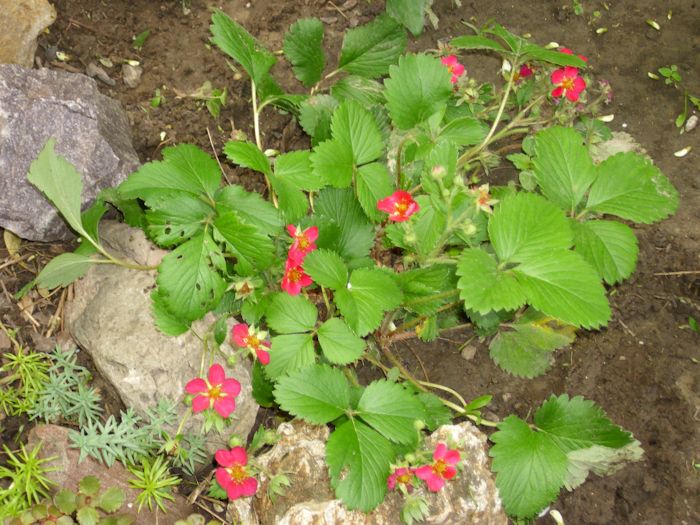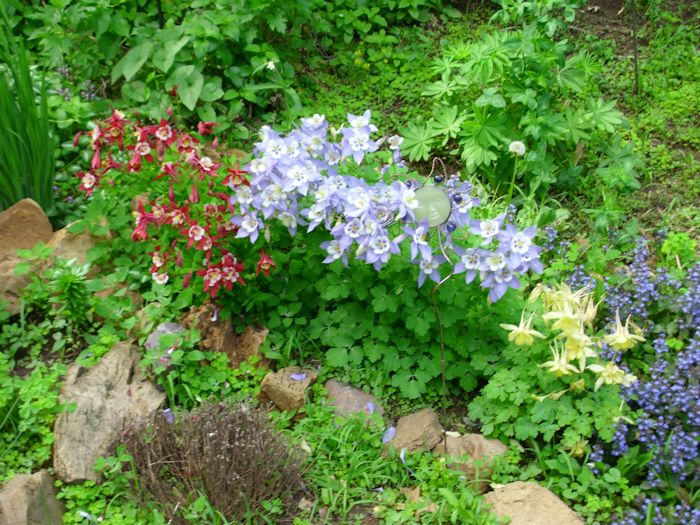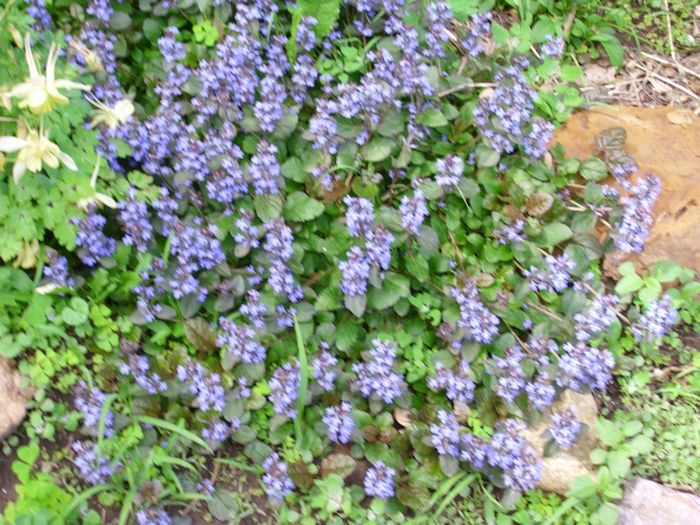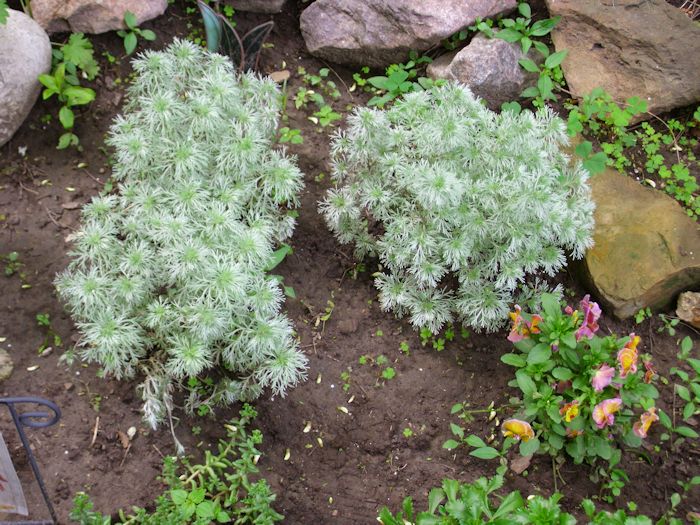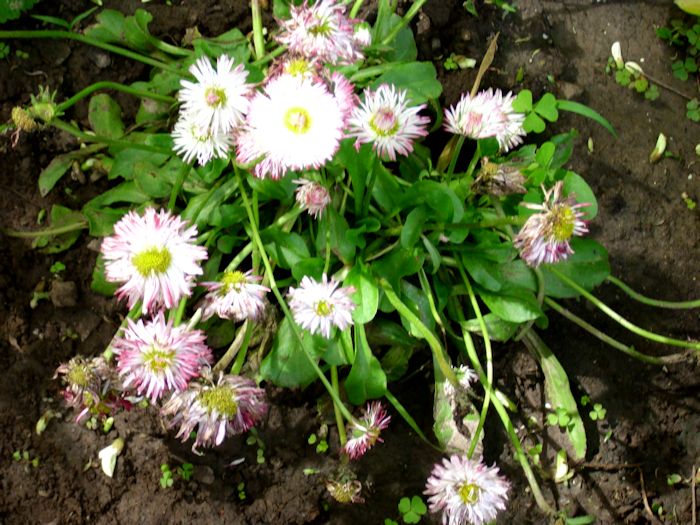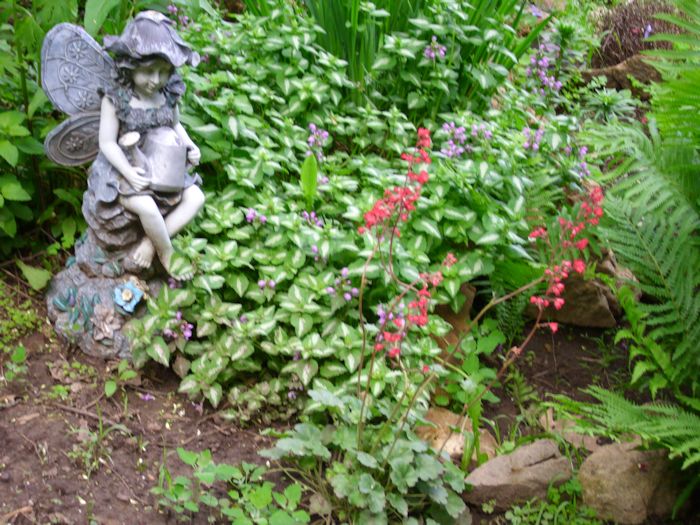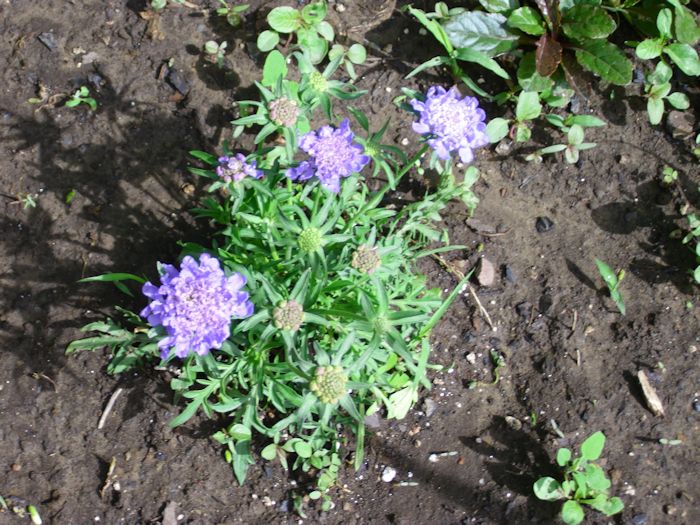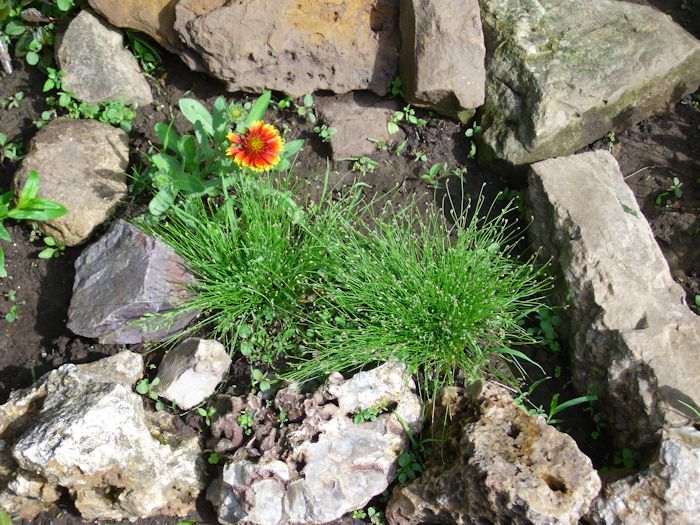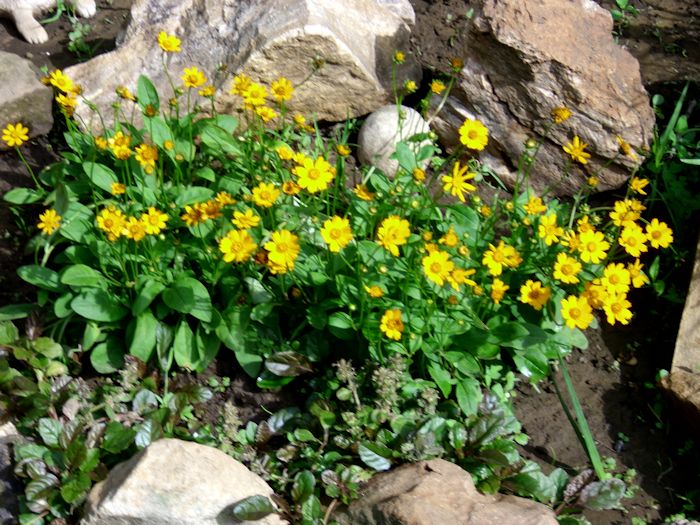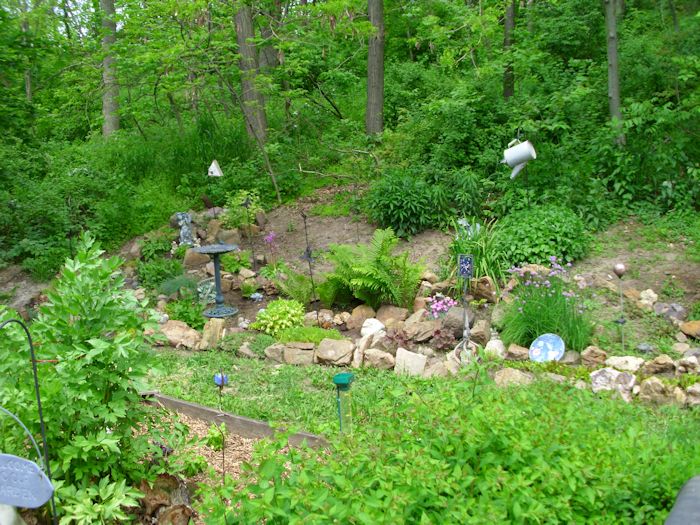A comment I regularly receive is that people can’t understand how Rebecca and I can work so closely together and for so many years. (We recently celebrated 31 wonderful years together, 25 of which we’ve worked in business together and 13 of which we’ve been self-sufficient.) Of course, there isn’t any hard and fast answer to this question and what works for us is unlikely to work for anyone else.
However, I think you could boil some of the key elements down to a few words, such as mutual respect. We do odd things like say, “Please” and “Thank you.” I say these things are odd because I don’t know that many couples exercise the option to show each other courtesy. We also expect that we’ll fail and that the other person will also fail–that forgiveness is both necessary and desired. If people simply respected each other and employed courtesy freely, I’m sure the divorce rate would decrease. Worrying more about the other person than yourself has gone out of style, unfortunately, so I’m sure the divorce lawyers such as Simon Law attorneys who are skiled in this area, have nothing to worry about.
Divorcing is obviously not what the future couples had in mind when they married each other, but let’s face it, it happens, and the only way to get through it is to make sure both sides are treated fairly – that is the primary purpose of marital dissolution and the lawyers who can help with this approach the matter with both firmness and compassion because they recognize the vast amount of stress that one might feel going through a divorce and having their dreams for a happy home life sent into disarray. Moreover, with more and more couples choosing to get prenuptial agreements than ever before, getting an amicable divorce has never been easier. Provided that the prenuptial agreement has been checked over and validated by a team of prenup lawyers, then any property and assets owned by a couple should be able to be divided up in a mutually convenient manner.
That is not all though. Personally, I think that kinder divorces are going to become more commonplace. This is why divorce lawyers such as Peters And May are appointed to help those out who need a case settling. Divorce doesn’t have to mean hatred of the other, fairness should always play a part no matter the circumstances.
Rebecca has a special talent though that’s the topic of today’s post. She makes the mundane seem quite spectacular. Every year she creates a rock garden for me. It’s the first thing I see from the window when I get up in the morning and the last thing I see each night. I won’t share the window view, however–that’s exclusively for me. Here is a ground level view of some of the highlights of the garden. One of my current favorites is the Scottish bluebells:
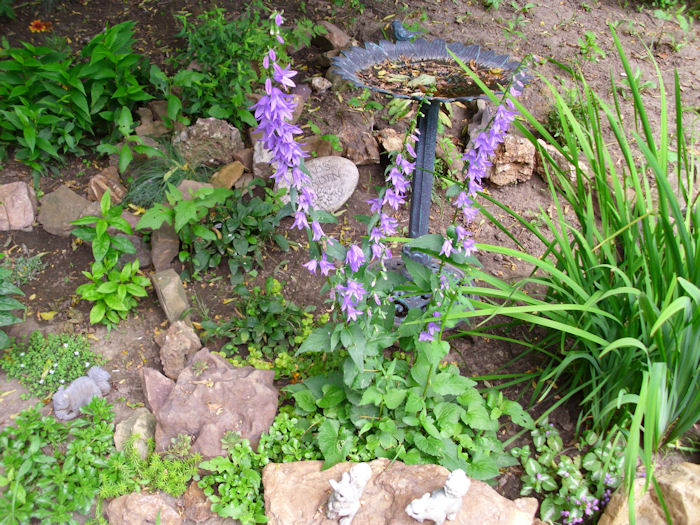
The purple flowers really show up nicely. They’re getting tall and spiky now. Another colorful member of the rock garden is the blanket flower shown here:
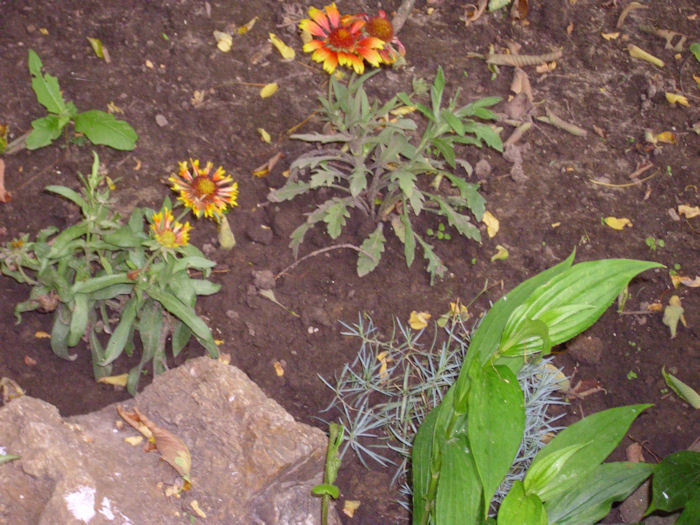
From a color perspective, they remind me of a larger version of the Indian paintbrush that grows natively around here. We need to plant the blanket flower each year (the Scottish bluebells come back on their own each year).
The rock garden has a lot of shade, so Rebecca plants sedums freely in it. The blue spruce sedum is flowering right now. The yellowish flowers are a contrast to the rest of the plant and make it look quite fancy as shown here:
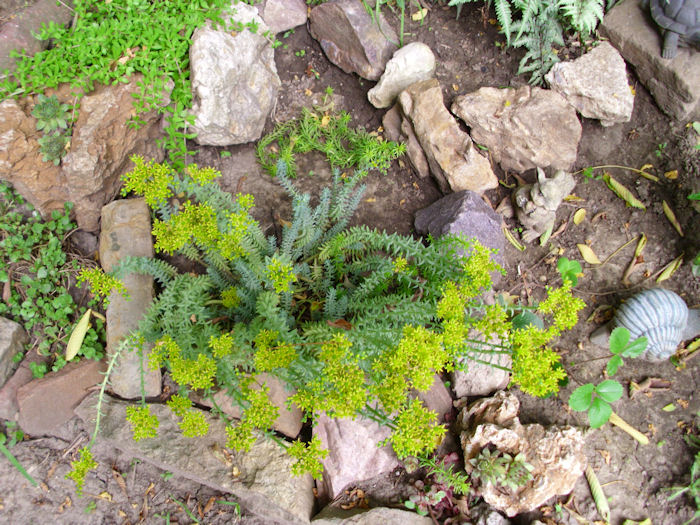
The autumn joy sedums are also quite pretty. The variegated version adds some lovely color to the rock garden as shown here:
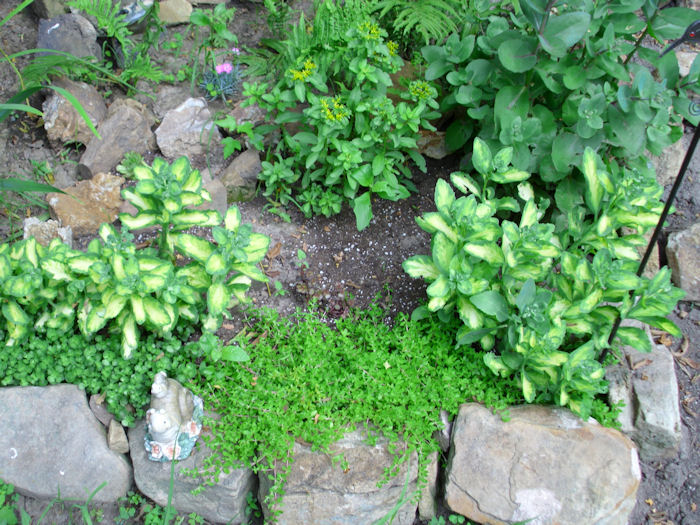
At the front of this part of the rock garden is a John Creech sedum. All of these sedums will last through the winter. Rebecca normally covers them with leaves. However, if I ever found them in precisely the same spot for more than two years in a row, I’d be amazed. Rebecca loves to move things around.
A final offering is the Japanese painted fern. it looks a bit metallic in some respects as shown here:
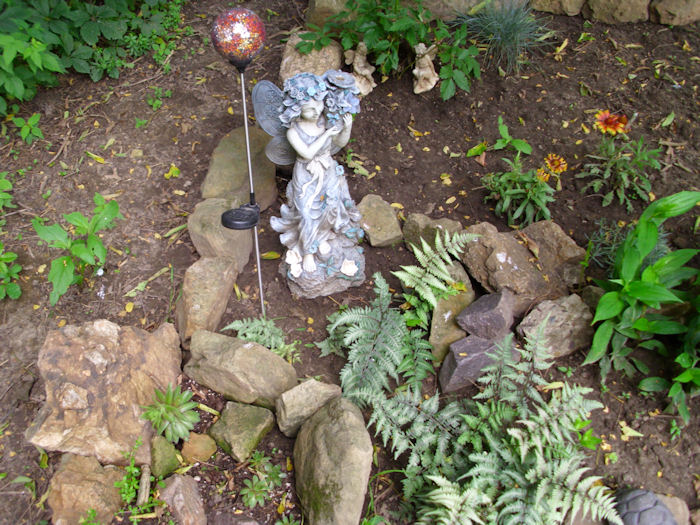
These are young ferns. As they mature, the center will take on a more reddish hue. I’m looking forward to seeing what they look like later.
The care that Rebecca takes in maintaining this rock garden (and all of our other gardens) tells me a great deal about her love for me. That, in turn, makes it easier to overlook the rocks in the road we take together. I can’t imagine working anywhere without my wife. Together, the two of us make an amazing team.
If you’re going to enjoy your self-sufficiency, you need to come up with a plan to maintain your relationships. Being courteous helps, but taking time to care is better. Can you imagine working with your significant other for 25 years? I certainly hope that you’ve found the same joy that I have. Write me about your best experiences at [email protected].

